News
Research: fructose makes you hungry
16 Dec 2014The brain responds differently to two kinds of sugar, according to a report at the American College of Neuropsychopharmacology annual meeting in Phoenix Arizona. The study suggests that fructose heightens the response of brain reward circuits to food cues, promoting feeding behaviour. Currently, roughly two out of three U.S. adults are overweight and one out […]

The brain responds differently to two kinds of sugar, according to a report at the American College of Neuropsychopharmacology annual meeting in Phoenix Arizona. The study suggests that fructose heightens the response of brain reward circuits to food cues, promoting feeding behaviour.
Currently, roughly two out of three U.S. adults are overweight and one out of three is obese. Changes in lifestyle and dietary intake during the past quarter century are thought to be the main culprits, with the increase in fructose consumption of particular concern. Fructose is the simple sugar found in fruit, but it is added to many foods as a “refined sugar” in the form of high-fructose corn syrup. By comparison, glucose, the primary energy source for the body, is usually produced through the breakdown of complex carbohydrates. Fructose ingestion produces smaller increases in circulating satiety hormones than glucose ingestion. Further, administration of fructose directly into the brain provokes feeding in rodents, whereas glucose administered this way promotes satiety, or the feeling of being full. Preliminary studies in people have also shown that glucose reduces activity in the hypothalamus, an event that is associated with metabolic satiety, whereas fructose does not.
Using functional magnetic resonance imaging (fMRI), Kathleen Page at the Keck School of Medicine of the University of Southern California (USC) and her colleagues in the Department of Psychology at the University of Southern California extended this work. They examined brain responses and motivation to eat when research volunteers viewed images of food (like chocolate cake) after they drank a beverage containing either glucose or fructose. The participants were 24 young men and women, 16 to 25 years of age. They viewed images of food during fMRI scans of their brains and reported how much they wanted to eat. The food cues produced activation in the nucleus accumbens, a part of the brain’s “reward circuit”, and increased the desire for food. Activation in the nucleus accumbens was greater after consuming the fructose drink compared to the glucose drink. The fructose drink also resulted in greater ratings of hunger and motivation to eat compared to the glucose drink. These neural and behavioural responses to high-calorie food stimuli could promote eating, and more so after consuming fructose compared to glucose.
Related news
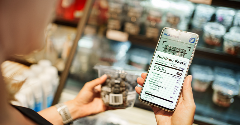
Has ‘clean’ had its day?
22 Dec 2025
Wielding clean-label positioning and fortification as marketing levers is a dangerous strategy, and brands would be better off explaining the hows and whys of the ingredients in their products, say experts.
Read more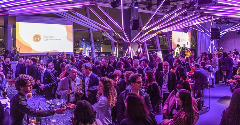
Celebrating the winners of the Fi Europe Innovation Awards 2025
3 Dec 2025
Food industry stakeholders celebrated as the winners of the Fi Europe Innovation Awards were announced at a ceremony in Paris.
Read more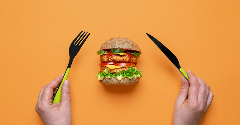
Alternative protein startups pivot to B2B ingredients amid funding shift
27 Nov 2025
Alt protein startups are pivoting from consumer meat analogues to high-value B2B ingredients, driven by stronger investor interest, better margins, and clearer commercial pathways.
Read more
Walmart Marketplace’s record growth prompts search for UK sellers
26 Sep 2025
Walmart’s third-party e-commerce platform, Marketplace, has witnessed extraordinary growth – but a need for more product diversity has prompted the retailer to recruit UK sellers.
Read more
The winners of Vitafoods Europe Startup Challenge 2025 revealed
29 May 2025
Four startups – Yomio Drops, PFx Biotech, Revobiom, and Favamole – took top prizes at this year’s Vitafoods Europe Startup Challenge awards.
Read more
East takes on West in the fight for future food flavours
30 Apr 2025
Asian and South American flavours are now key components on global menus, driven by a growing global appetite for culinary mashups.
Read more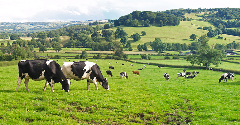
Food companies urged to bring ‘joy’ and urgency to healthy food mission
14 Mar 2025
For too long, businesses have treated health and sustainability as separate agendas – but there is growing evidence to show diets that benefit human health can also enhance that of the planet, say experts.
Read more
Entries open for inaugural Vitafoods Europe Innovation Awards
29 Jan 2025
Entries are open for the inaugural Vitafoods Europe Innovation Awards, celebrating the ingredients, finished products, partnerships, and initiatives redefining the nutraceutical landscape.
Read more
Paris Olympics: Food and beverage brands champion health, fun, and sustainability
5 Aug 2024
Food and beverage brands are aligning with the Paris Olympics 2024 Food Vision, which emphasises sustainability, local sourcing, and plant-based diets.
Read more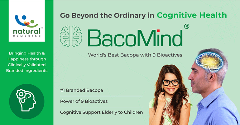
Natural Remedies: Bringing health and happiness via validated branded ingredients
18 Apr 2024
Natural Remedies is an internationally renowned botanical healthcare company committed to advancing the field through rigorous research and the development of clinically validated Branded Ingredients. Guided by our foundational principle of ‘BEING USEF...
Read more
